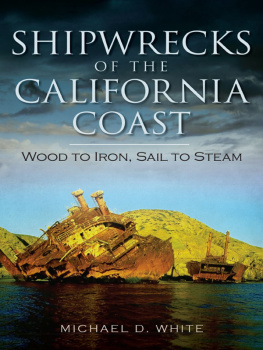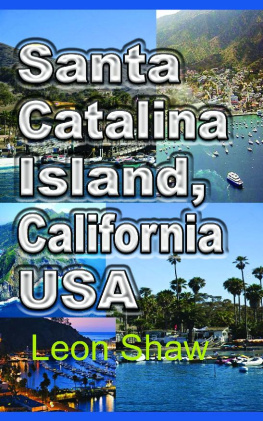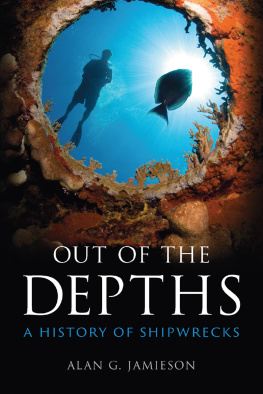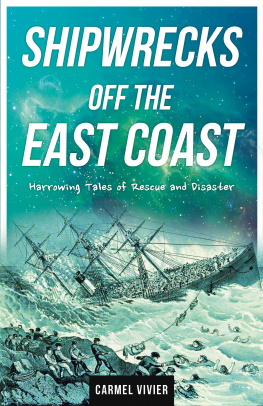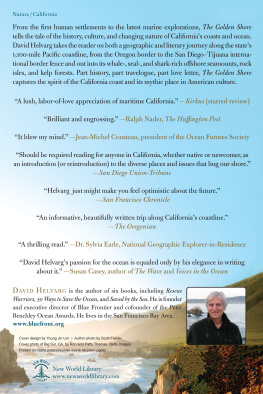

Published by The History Press
Charleston, SC 29403
www.historypress.net
Copyright 2014 by Michael D. White
All rights reserved
Front cover: The rusting remains of the Waterman Steamship freighter Chickasaw, lost on Santa Rosa Island in 1962. Courtesy of Robert Schwemmer.
First published 2014
e-book edition 2014
ISBN 978.1.62585.121.5
Library of Congress CIP data applied for.
print edition ISBN 978.1.60949.924.2
Notice: The information in this book is true and complete to the best of our knowledge. It is offered without guarantee on the part of the author or The History Press. The author and The History Press disclaim all liability in connection with the use of this book.
All rights reserved. No part of this book may be reproduced or transmitted in any form whatsoever without prior written permission from the publisher except in the case of brief quotations embodied in critical articles and reviews.
CONTENTS
ACKNOWLEDGEMENTS
Anything new is built on a foundation of what has gone before. This book is no different, and it could not have become a reality without a heavy reliance on the works published over the years by others so committed to preserving Californias maritime history.
I speak particularly of James Gibbs, Jerry MacMullen, Joe Williamson, James Delgado, Robert Schwemmer, Stephen Haller, James Shaw, William Worden, Charles Regal, Elmar Baxter, John Haskell Kemble, Gordon Newell, John Niven, Steve Potash, Ernest Marquez, Walter Jackson, Fred Stindt, Richard Benson, James Hitchman, JoAnn Semones, Thomas Layton, Harry Kirwin and Don B. Marshall.
I thank them for their work, and my sincere gratitude also goes out to the following for their encouragement and invaluable assistance in compiling the information and images for this book: Gina Bardi, reference librarian, and Ted Miles, assistant reference librarian, at the San Francisco Maritime National Historical Park; Joan Berman, special collections librarian, Humboldt State University Library, Arcata, California; Carolyn Zeitler, archivist at the Kelley House Museum, Mendocino, California; marine archaeologist and historian Robert Schwemmer; Paul Vandecarr, collections curator at the Pacific Grove Museum, Pacific Grove, California; Amanda Williford, curator and reference archivist at the Golden Gate NRA Park Archives & Records Center, San Francisco, California; and Robert W. Graham, archivist of the Historical Collections of the Great Lakes at Bowling Green State University, Bowling Green, Ohio.
I would also like to thank the reference library staffs of the Pasadena Public Library, the Long Beach Public Library, the Burbank Public Library and the Los Angeles Central Library, as well as Courtney A. White, Bruce Roberts and John Penn for their generous assistance in gathering material for this book.
Also due for more than a fair share of praise is the tireless staff responsible for compiling the priceless California Digital Newspaper Collection at the University of California, Riversides Center for Bibliographical Studies and Research. Their dedicated work in archiving decades of heretofore almost inaccessible California newspapers greatly eased the research that went into this book.
My sincere gratitude also goes out to Jerry Roberts and Will Collicott of The History Press for their encouragement and guidance during the process of piecing this book together.
Lastly, I want to thank my wife, Pamalee, for her support during the yearlong challenge of researching and writing this book. It would not have become a reality without her patience, forbearance and generous spirit, and it is to her that I dedicate this work.
INTRODUCTION
Over the past four centuries, as California morphed from a remote colonial backwater into an almost irresistible magnet for both people and commerce from all over the world, the number of ships sailing its waters grew, as did the number of ships in distress, evidenced by disaster after disaster that claimed thousands of lives and millions of dollars in treasure and cargo.
Exactly how many vessels have been wrecked on that particularly perilous shore over the past four centuries, no one will ever know. Some were famous for their elegant accommodations or admired for their speed, while the majority of others labored as virtually anonymous, unheralded workhorses whose doom on some bleak, rocky point garnered only a fleeting mention on the shipping page of a newspaper. One of the former was the side-wheeler Tennessee, inbound for San Francisco from Panama, when she went aground and was wrecked in a dense fog at Indian Cove (later named Tennessee Cove) just four miles from the Golden Gate. The story of the wreck filled hundreds of column inches in newspapers across the country for weeks after the ship went ashore and was wrecked on March 6, 1853.
According to the contemporary history The Annals of San Francisco, the graceful Tennessee went upon a small sandy beach, on both sides of which at a short distance, were enormous cliffs, on which, if the vessel struck, she would have gone immediately to pieces, and probably most of those on board would have perished.
Her passengers safely ashore, the ships crew joined salvors to discharge what part of the cargo and sacks of mail could be saved. It was work, wrote the Daily Alta California, that made her officers and crew feel as if they were attending the funeral obsequies of a dear and valued friend. She was a favorite craft and one of the best sea boats that plowed the Pacific Ocean. The Tennessee, the article continued, was the home, the pride, the refuge of her officers and crew, and many a tear as salt as the brine that surrounds her shattered hull has coursed unhidden from manly eyes and sprung up involuntarily from the bold and courageous hearts of those whose pride and delight she was, as they have gazed upon the last resting place of the gallant Tennessee.
A few days later, the Sacramento Daily Union reported, A voluntary meeting of the passengers of the steamship Tennessee passed resolutions acquitting Captain Edward Mellus of all blame connected with her loss. They also pay him a high compliment for his zeal, strict attention and noble and gentlemanly conduct on the occasion.
In November 1885, the Daily Alta California reported, It has been a month of hurricanes and heavy seas and some of the staunchest vessels have succumbed to the fierce battle of the elements. The newspaper, the most widely circulated in the state, catalogued the months losses: the schooner Hannah Madison, wrecked at Navarro; the schooners Mendocino and Fairy Queen, wrecked on the rocks at Whitesboro; and the Annie Gee, lost at the mouth of the Elk River.
Ships severely damaged that month alone along the northern coast included the schooners Lottie Carson, Fannie Dutard, Maxim and Lizzie Madison; the steamer Oregon; and the schooner Fidelity, whose master later said the gale in November 1885 was the worst and heaviest blow hed ever experienced on this coast.
Hardly in the Tennessees league, the schooner J.H. Congdon was a butter boatan unheralded, two-masted workhorse owned by a cooperative of dairy farmers to haul their products from the tiny coastal town of Bodega south to San Francisco. She was lost, along with all of her crew, on March 31, 1886.
Two days later, a matter-of-fact, single-sentence article appeared in the
Next page
